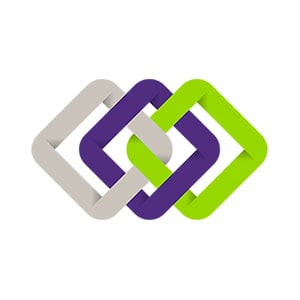-
Financial reporting and accounting advisory services
You trust your external auditor to deliver not only a high-quality, independent audit of your financial statements but to provide a range of support, including assessing material risks, evaluating internal controls and raising awareness around new and amended accounting standards.
-
Accounting Standards for Private Enterprises
Get the clear financial picture you need with the accounting standards team at Doane Grant Thornton LLP. Our experts have extensive experience with private enterprises of all sizes in all industries, an in-depth knowledge of today’s accounting standards, and are directly involved in the standard-setting process.
-
International Financial Reporting Standards
Whether you are already using IFRS or considering a transition to this global framework, Doane Grant Thornton LLP’s accounting standards team is here to help.
-
Accounting Standards for Not-for-Profit Organizations
From small, community organizations to large, national charities, you can count on Doane Grant Thornton LLP’s accounting standards team for in-depth knowledge and trusted advice.
-
Public Sector Accounting Standards
Working for a public-sector organization comes with a unique set of requirements for accounting and financial reporting. Doane Grant Thornton LLP’s accounting standards team has the practical, public-sector experience and in-depth knowledge you need.
-
Tax planning and compliance
Whether you are a private or public organization, your goal is to manage the critical aspects of tax compliance, and achieve the most effective results. At Doane Grant Thornton, we focus on delivering relevant advice, and providing an integrated planning approach to help you fulfill compliance obligations.
-
Research and development and government incentives
Are you developing innovative processes or products, undertaking experimentation or solving technological problems? If so, you may qualify to claim SR&ED tax credits. This Canadian federal government initiative is designed to encourage and support innovation in Canada. Our R&D professionals are a highly-trained, diverse team of practitioners that are engineers, scientists and specialized accountants.
-
Indirect tax
Keeping track of changes and developments in GST/HST, Quebec sales tax and other provincial sales taxes across Canada, can be a full-time job. The consequences for failing to adequately manage your organization’s sales tax obligations can be significant - from assessments, to forgone recoveries and cash flow implications, to customer or reputational risk.
-
US corporate tax
The United States has a very complex and regulated tax environment, that may undergo significant changes. Cross-border tax issues could become even more challenging for Canadian businesses looking for growth and prosperity in the biggest economy in the world.
-
Cross-border personal tax
In an increasingly flexible world, moving across the border may be more viable for Canadians and Americans; however, relocating may also have complex tax implications.
-
International tax
While there is great opportunity for businesses looking to expand globally, organizations are under increasing tax scrutiny. Regardless of your company’s size and level of international involvement—whether you’re working abroad, investing, buying and selling, borrowing or manufacturing—doing business beyond Canada’s borders comes with its fair share of tax risks.
-
Transfer pricing
Transfer pricing is a complex area of corporate taxation that is concerned with the intra-group pricing of goods, services, intangibles, and financial instruments. Transfer pricing has become a critical governance issue for companies, tax authorities and policy makers, and represents a principal risk area for multinationals.
-
Succession & estate planning
Like many private business owners today, you’ve spent your career building and running your business successfully. Now you’re faced with deciding on a successor—a successor who may or may not want your direct involvement and share your vision.
-
Tax Reporting & Advisory
The financial and tax reporting obligations of public markets and global tax authorities take significant resources and investment to manage. This requires calculating global tax provision estimates under US GAAP, IFRS, and other frameworks, and reconciling this reporting with tax compliance obligations.

-
Transactions
Our transactions group takes a client-centric, integrated approach, focused on helping you make and implement the best financial strategies. We offer meaningful, actionable and holistic advice to allow you to create value, manage risks and seize opportunities. It’s what we do best: help great organizations like yours grow and thrive.
-
Restructuring
We bring a wide range of services to both individuals and businesses – including shareholders, executives, directors, lenders, creditors and other advisors who are dealing with a corporation experiencing financial challenges.
-
Forensics
Market-driven expertise in investigation, dispute resolution and digital forensics
-
Cybersecurity
Viruses. Phishing. Malware infections. Malpractice by employees. Espionage. Data ransom and theft. Fraud. Cybercrime is now a leading risk to all businesses.
-
Consulting
Running a business is challenging and you need advice you can rely on at anytime you need it. Our team dives deep into your issues, looking holistically at your organization to understand your people, processes, and systems needs at the root of your pain points. The intersection of these three things is critical to develop the solutions you need today.
-
Creditor updates
Updates for creditors, limited partners, investors and shareholders.

-
Governance, risk and compliance
Effective, risk management—including governance and regulatory compliance—can lead to tangible, long-term business improvements. And be a source of significant competitive advantage.
-
Internal audit
Organizations thrive when they are constantly innovating, improving or creating new services and products and envisioning new markets and growth opportunities.
-
Certification – SOX
The corporate governance landscape is challenging at the best of times for public companies and their subsidiaries in Canada, the United States and around the world.
-
Third party assurance
Naturally, clients and stakeholders want reassurance that there are appropriate controls and safeguards over the data and processes being used to service their business. It’s critical.
-
 Assurance Important changes coming to AgriInvest in 2025AgriInvest is a business risk management program that helps agricultural producers manage small income declines and improve market income.
Assurance Important changes coming to AgriInvest in 2025AgriInvest is a business risk management program that helps agricultural producers manage small income declines and improve market income. -
 ASPE Sec. 3041 Agriculture Understanding and applying the new ASPE Section 3041 AgricultureThe Canadian Accounting Standards Board (AcSB) has released new guidance on recognizing, measuring and disclosing biological assets and the harvested products of bio assets.
ASPE Sec. 3041 Agriculture Understanding and applying the new ASPE Section 3041 AgricultureThe Canadian Accounting Standards Board (AcSB) has released new guidance on recognizing, measuring and disclosing biological assets and the harvested products of bio assets. -
 Tax alert Agricultural Clean Technology ProgramThe Agricultural Clean Technology Program will provide financial assistance to farmers and agri-businesses to help them reduce greenhouse gas (GHG) emissions.
Tax alert Agricultural Clean Technology ProgramThe Agricultural Clean Technology Program will provide financial assistance to farmers and agri-businesses to help them reduce greenhouse gas (GHG) emissions. -
 Tax alert ACT Program – Research and Innovation Stream explainedThe ACT Research and Innovation Stream provides financial support to organizations engaged in pre-market innovation.
Tax alert ACT Program – Research and Innovation Stream explainedThe ACT Research and Innovation Stream provides financial support to organizations engaged in pre-market innovation.
-
Builders And Developers
Every real estate project starts with a vision. We help builders and developers solidify that vision, transform it into reality, and create value.
-
Rental Property Owners And Occupiers
In today’s economic climate, it’s more important than ever to have a strong advisory partner on your side.
-
Real Estate Service Providers
Your company plays a key role in the success of landlords, investors and owners, but who is doing the same for you?

-
Mining
There’s no business quite like mining. It’s volatile, risky and complex – but the potential pay-off is huge. You’re not afraid of a challenge: the key is finding the right balance between risk and reward. Whether you’re a junior prospector, a senior producer, or somewhere in between, we’ll work with you to explore, discover and extract value at every stage of the mining process.
-
Oil & gas
The oil and gas industry is facing many complex challenges, beyond the price of oil. These include environmental issues, access to markets, growing competition from alternative energy sources and international markets, and a rapidly changing regulatory landscape, to name but a few.
Advances in technology and increasing consumer adoption of digital banking and payment tools has created efficiencies for many small businesses, but it has also opened new avenues for financial fraud. A little knowledge and preparation can go a long way to fill any gaps in your business’ fraud protection measures.
Financial fraud is a persistent problem that can have serious ramifications on your business’ bottom line, not to mention cause potential reputational damages. Approximately a quarter of all fraud results in losses of over $1 million, according to independent estimates that also highlight the unsettling fact that the typical organization globally loses 5% of its annual revenues to occupational fraud.
Financial fraud is a threat that can come from inside or outside of your business. A sound fraud prevention strategy should take both into account. Each prong is equally important and comes with different internal controls that can protect your organization’s finances and, ultimately, its reputation.
Internal fraud prevention: Separate the accounting and payments function in your business
Internal fraud happens when it is committed against your business by officers, directors or employees. In broad terms, the solution to this problem is often strong governance.
Consider the payments function of your organization – this includes payroll and invoices. Any payment could be fraudulent, and any one of those situations could involve a person (or group of persons) tasked with making and covering up the fraudulent payment.
The first step for your organization is to separate the accounting and payments function between at least two persons. Unfortunately, a common situation in many small businesses is to combine all financial decision-making and recording into one position, but this can give one individual the power to release funds without the involvement of any other individual.
Once the accounting and payment functions are separated, staff should be trained on new payment processes and on recognizing potential signs of fraud. Having an advisor assist you in understanding the risks facing your organization and in better configuring online banking and payment systems can help protect your business from financial fraud, whether internal or external.
External fraud prevention: Beware of fraudulent invoicing scams
The second type of corporate fraud is external, as it usually involves some form of impersonation, phishing or identity theft. In this scenario, a person poses as a vendor and has banking information changed for that vendor so they can receive what appears to be payment for a legitimate invoice. Other terms for this practice are “payment redirect” or “cash disbursement fraud.”
Your business can counteract this type of fraud by verifying the purported vendor’s identity. As a general rule, your business shouldn’t allow banking information to be changed without directly contacting someone at the vendor’s organization (a person that is already known and trusted) to validate that change. Email should be avoided. Instead, use a trusted form of communication, for example a telephone number that you know belongs to the organization you’re trying to contact, and speak to a known individual. This simple measure, alone, could significantly reduce the risk of cash disbursement fraud.
Additional measures can be taken on the back end of your business, by implementing a thorough review process to verify how payments are made and how vendor information is protected.
If nothing else, your organization should start by raising awareness, and ensuring that employees are trained in identifying and addressing common types of fraud. Vigilant employees would naturally be inclined to validate vendors’ identities and avoid making payments to persons they think might be impersonating legitimate vendors.
Implement, then update your antifraud program to account for changing fraud tactics
Proactive organizations conduct a thorough system review before implementing a specific antifraud plan. This review includes banking software and the internal processes that surround it – such as updating banking information and how those systems interrelate with accounting systems. Understanding how your organization’s banking software interacts with other systems will allow you to avoid a situation where one individual can make banking changes without the approval or involvement of another.
Even if your business has already implemented the measures suggested above, and even if it has an antifraud program, it should also have a review process in place, so its antifraud program remains current. As payment processes change, fraud tactics do too, so having a review process with a specific schedule would serve the dual purpose of reminding staff about best practices and changing processes to reflect an evolving business environment.
Speak to your Grant Thornton advisor
Grant Thornton is a proponent of risk-based antifraud programs. When structured properly, a formal antifraud program can identify the specific fraud scenarios that an organization could be exposed to and adopts the controls that are appropriate for each scenario. Your Grant Thornton advisor can help your organization throughout this process, by assessing the design and strength of your organization’s current controls, recommending additional controls and providing advice on their effective implementation.



